Centrifugal Clutch is a type of clutch in which centrifugal force is used to connect the engine drive shaft with the shaft of a transmission. It is placed in between the engine flywheel and the transmission system. Its main function is to connect the engine shaft with the transmission shaft. It works more efficiently at higher speeds.
Main Parts
The main parts of the centrifugal clutch are,
1. Shoes: The shoes are of sliding types which slides in the guideways. It consists of friction lining at the end and this friction lining makes contact with the drum during an engagement.
2. Spring: Spring is used to disengage the clutch when the engine rotates at the lower speed.
3. Spider or guides: The spiders are mounted on the driver (engine) shaft or motor shaft. The spiders are equally spaced. Equally spaced means, if they are four guides than each guide is separated from each other by 90 degrees. The sliding shoes are kept in between these guides and each guide is holding a spring.
4. Friction lining: The outer surface of sliding shoes has friction lining. It helps in making a grip on the inner surface of the drum.
5. Drum: The drum of the clutch act as housing which encloses all the parts of the clutch that includes sliding shoes, guides, springs, etc. It is connected to the driven shaft of the transmission system or chains or belt.
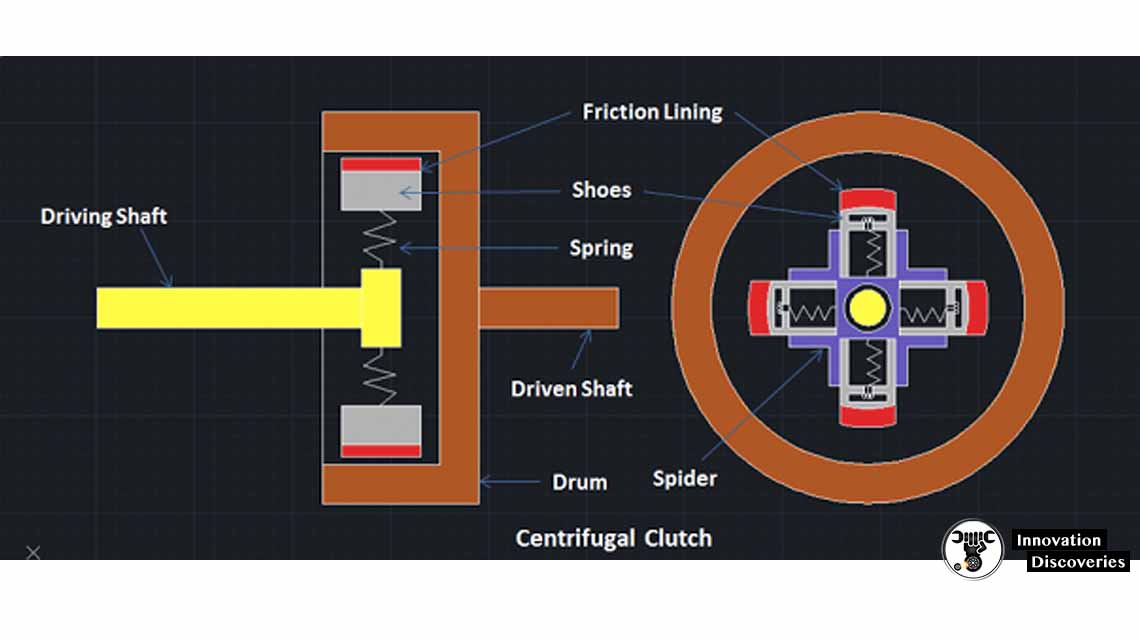
Working Principle
It’s working totally depends upon the centrifugal force created by the driving member (engine or motor). The centrifugal force is used to engage the clutch with a driven shaft. As the engine starts rotating, it produces a centrifugal force which makes the sliding shoes to move outward. The friction lining of the shoes gets connected to the inner
Surface of the drum and it starts moving.
Since the drum is connected to the driven shaft,
So, the power is transmitted from the engine shaft to the transmission shaft and finally to the load.
Working of Centrifugal Clutch
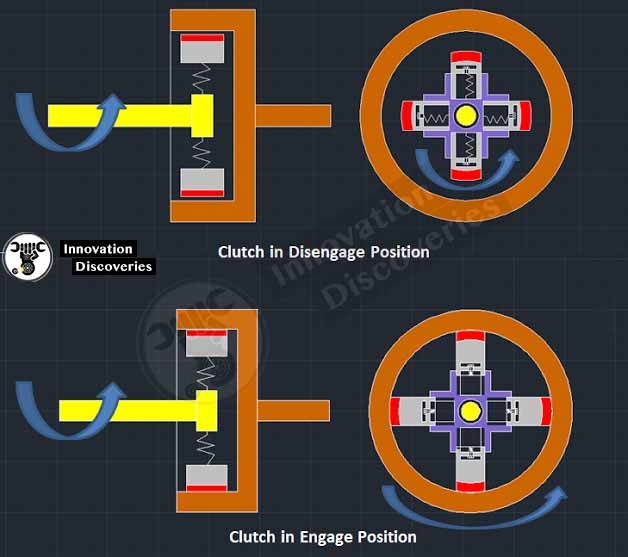
- As the engine rotates, the inside assembly of the centrifugal clutch starts rotating but drum remains stationary and no power is transmitted. At lower speed, the centrifugal force produced is not sufficient to overcome the spring force. So the clutch remains disengaged. But as the speed increases, the centrifugal force also increases and now the centrifugal force becomes greater than the spring force.
- As the centrifugal force becomes greater than the spring force, this allows the sliding shoes to move outward against the spring and get engaged with the inner surface of the drum.
- The drum starts rotating and transfer the rotating power from the engine to the driven shaft of the transmission.
- When the load on the engine increases, its speed decreases and disengages the clutch.
For better explanation watch the video given below:
Also, read:
- TORQUE CONVERTER: FUNCTIONS, PARTS, WORKING PRINCIPLES, AND TYPES
- Full Notes on Synchromesh Gearbox
- Manual Or Automatic Gearbox: Which Is The Best?
- How manual gearboxes work
Advantages
- It is simple and requires less maintenance.
- It is inexpensive.
- Since it is automatic, so it does not need a necessary control mechanism.
- Its engagement speed can be controlled by selecting appropriate spring.
- It helps to prevent the engine from stalling.
Disadvantages
- There is a loss of power in it due to slipping and friction.
- It is not capable of transferring a high amount of power and its shoes to slip in heavy load conditions.
- It experiences an overheating problem.
- Its engagement depends upon the speed of the driving shaft.
Application
Centrifugal clutch is mainly used in lawnmowers, mopeds, go-karts, mini bikes, chainsaws, etc. It is also used in some paramotors and boats to keep the engine running
During stalling and disengage loads during starting and idling.


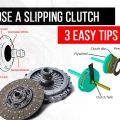
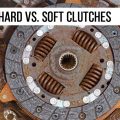
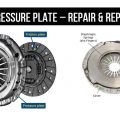
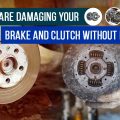
3 Comments